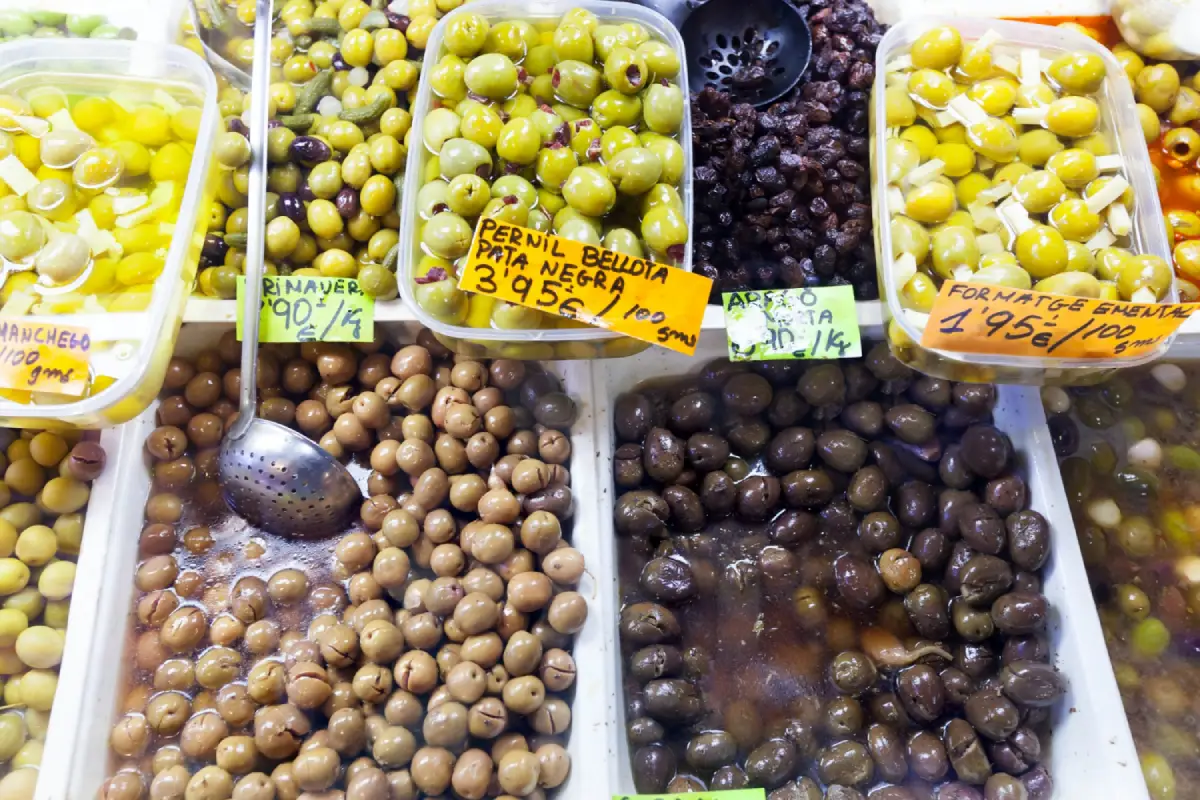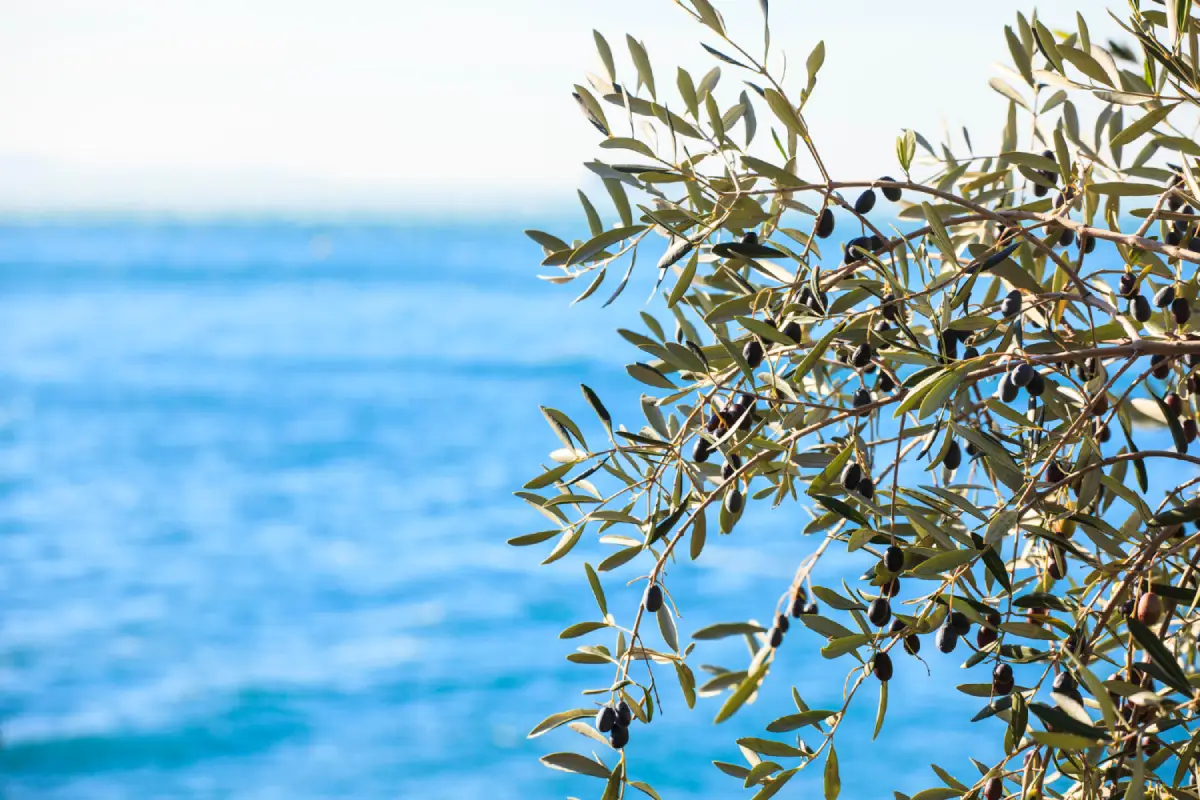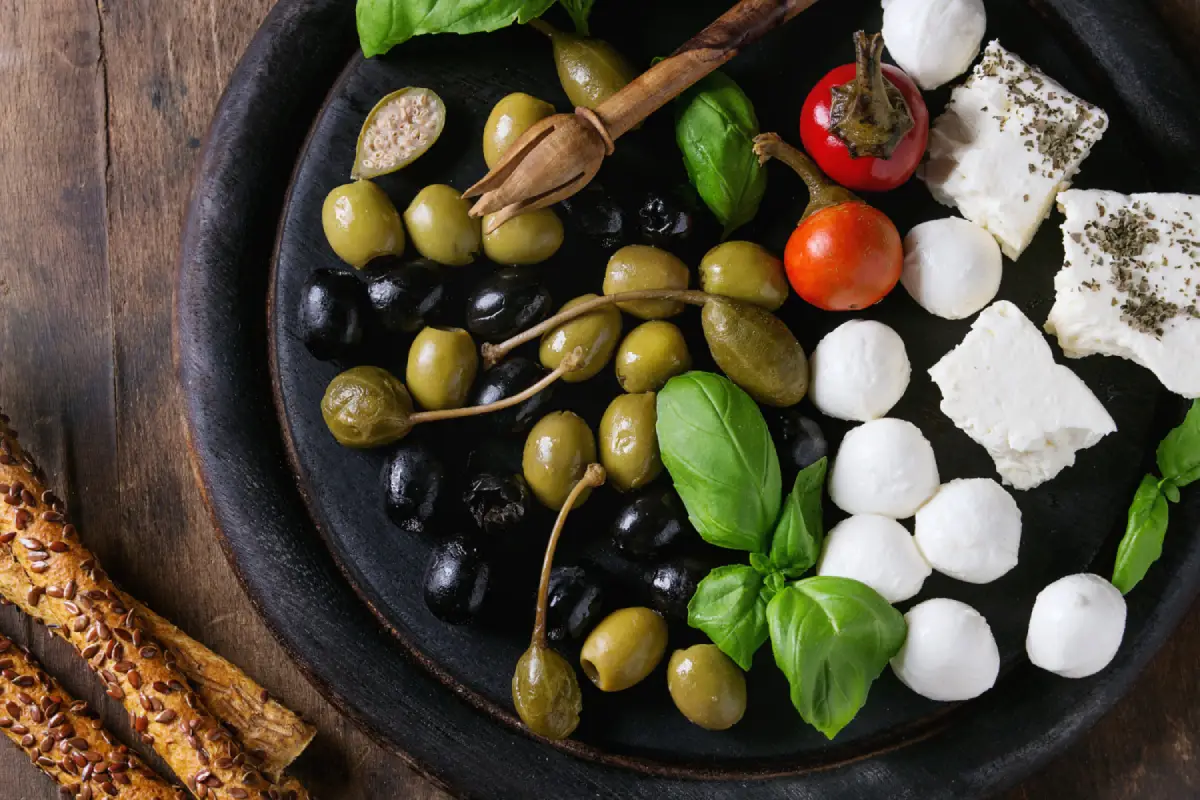Welcome to the world of Kalamata olives! These unique olives are not just a staple in Mediterranean cuisine but also a symbol of Greek culinary heritage. Our journey, “Exploring Kalamata Olive Nomenclature: Names, Varieties, and Culinary Uses,” uncovers the secrets behind these famous olives. Known for their deep purple color and distinct shape, Kalamata olives have made their way from the sunny groves of Greece to kitchens around the globe.
In this article, we dive into the various names and types of Kalamata olives. Each name and type tells a story of regional traditions and culinary practices. Our guide offers insights into the world of these olives, from their popular nicknames to formal classifications. We also explore different Kalamata varieties, each bringing unique flavors and textures to dishes.
Whether you’re a cooking expert, a food lover, or just curious, this article will deepen your knowledge of Kalamata olives. Join us in this flavorful exploration and discover the many facets of Kalamata olive nomenclature.
The Origin of Kalamata Olives
Kalamata olives, named after the city of Kalamata in the Peloponnese region of Greece, have a history as rich as their flavor. These olives are not just a product of the present but a legacy of a centuries-old tradition. Their story begins in the sun-soaked lands of Greece, where olive cultivation dates back thousands of years.
The city of Kalamata, nestled in the heart of Messenia, has been synonymous with olive cultivation for generations. The unique climate and soil conditions of this region create the perfect environment for these olives to thrive. Learn more about the history and cultivation of olives in Greece. It’s here that Kalamata olives gained their distinct characteristics: a deep, purplish hue, a smooth and meaty texture, and a flavor that balances fruity, bitter, and salty notes.
Kalamata olives are more than just a local delicacy; they are a symbol of Greek tradition and agricultural expertise. These olives are often cited as a key example of the importance of geographical indication. This status not only protects the name ‘Kalamata’ but also ensures the authenticity and quality of the olives produced in this region.
Understanding the origin of Kalamata olives is key to appreciating their value in the culinary world. They are not just ingredients; they are a piece of Greek history and culture. This deep connection to their roots is what makes Kalamata olives truly special.
Understanding Kalamata Olive Nomenclature
Delving into the nomenclature of Kalamata olives, it’s fascinating to see how their names reflect their characteristics and origins. The term ‘Kalamata’ itself is a geographical indicator, tying these olives to their birthplace. However, the names for these olives extend beyond just ‘Kalamata.’
Firstly, in Greece, these olives are often referred to as ‘Kalamon,’ a term that’s as widely recognized as Kalamata. This alternate name still pays homage to their geographic origin while being distinct. Moreover, in culinary circles, they are sometimes called ‘Greek black olives,’ although this term can be a bit misleading as it encompasses a broader category of olives.
Interestingly, Kalamata olives are also known by more descriptive names. For example, their almond shape and dark hue have inspired names like ‘the almond of the olive world’ or ‘purple gems’. To gain insight into how olive names reflect their characteristics across cultures, explore this detailed analysis on olive nomenclature and classification. These descriptive monikers not only highlight their physical attributes but also add a touch of poetic imagery to their identity.
Therefore, understanding these various names is key to appreciating the diversity and uniqueness of Kalamata olives. Each name offers a glimpse into their rich heritage, their distinctive features, and their esteemed place in culinary traditions.
Varieties and Types of Kalamata Olives
Exploring the varieties and types of Kalamata olives underlines their versatility and highlights the depth of the Kalamata olive nomenclature. While the classic Kalamata is widely known, several varieties each offer unique flavors and textures.
The traditional Kalamata olive, recognizable by its deep purple color and almond shape, stands as the epitome of quality. Originating from the Kalamata region, these olives are celebrated for their large size, meaty texture, and the perfect harmony of fruity, bitter, and salty flavors.
Apart from the classic variety, smaller types also thrive in the same regions. These varieties, though similar in taste, tend to be firmer, making them perfect for dishes where a subtle hint of olive is preferred, enhancing flavors without dominating the palate.
Aged or brine-cured Kalamatas showcase another aspect of Kalamata olive nomenclature. The aging process in brine not only softens the olives but also deepens their flavor, resulting in a robust, wine-like taste that appeals to those seeking a more pronounced olive flavor.
By understanding the different varieties within the Kalamata olive nomenclature, enthusiasts and chefs can better appreciate the culinary potential these olives offer. From the classic, widely loved variety to the smaller, nuanced types and the intensely flavored aged olives, each brings its own unique set of characteristics to the table, enriching a wide array of culinary creations.
Culinary Uses of Kalamata Olives
Kalamata olives shine in the culinary world, bringing depth and complexity to a wide range of dishes. Chefs and home cooks alike treasure them for their unique flavor profile, which enhances everything from simple salads to elaborate main courses.
One of the most popular uses of Kalamata olives is in traditional Greek salads, where their rich taste contrasts beautifully with the freshness of tomatoes and cucumbers. But their culinary versatility extends far beyond salads. In pasta dishes, Kalamata olives add a burst of Mediterranean flavor, pairing well with both tomato-based and olive oil-based sauces. Their robustness also makes them an ideal ingredient in stews and braises, where they contribute a layer of complexity to the dish’s overall flavor profile.
For a more direct application, you can chop Kalamata olives and blend them into tapenades and spreads. These preparations highlight the olive’s flavor, making a delightful accompaniment to bread or a flavorful topping for grilled meats and fish. Moreover, Kalamata olives make an excellent addition to pizza toppings, providing a salty and fruity counterpoint to cheeses and other meats.
Beyond these traditional uses, innovative chefs experiment with Kalamata olives in desserts, using them to create unique sweet-salty flavor combinations. Whether chopped finely and added to chocolate cakes or used as a garnish on ice creams, Kalamata olives are proving to be a versatile ingredient that can surprise and delight even in unexpected contexts.
Kalamata olives, with their unique taste and texture, continue to inspire culinary creativity. Their ability to enhance a wide array of dishes underscores their indispensable role in Mediterranean cuisine and beyond.
Health Benefits
Kalamata olives are not just tasty; they’re also packed with health benefits. Rich in healthy fats, antioxidants, and vitamins, these olives are a nutritious addition to any diet. Explore the nutritional profile and health benefits of Kalamata olives.
First, they’re a great source of monounsaturated fats, especially oleic acid, which supports heart health. These fats can help reduce bad cholesterol levels and increase good cholesterol, protecting against heart disease.
Antioxidants in Kalamata olives, like vitamin E and polyphenols, fight off harmful free radicals. This action helps reduce oxidative stress and can lower the risk of chronic diseases, including cancer.
These olives also offer a decent supply of iron, calcium, and fiber. Iron boosts energy by improving blood health. Calcium strengthens bones and teeth. Fiber aids digestion and can help maintain a healthy weight.
Including Kalamata olives in your diet can also improve eye health, thanks to their vitamin A content. This nutrient is vital for good vision and immune function.
Lastly, the anti-inflammatory properties of Kalamata olives contribute to overall well-being. They can help reduce inflammation in the body, offering relief for conditions like arthritis.
Incorporating Kalamata olives into meals is an easy way to enjoy these health benefits. Whether in salads, dishes, or as a snack, they offer a nutritious boost to your diet.
How to Select and Store Kalamata Olives
Selecting and storing Kalamata olives correctly ensures you enjoy their full flavor and health benefits. Whether you’re picking them up from a grocery store or a specialty shop, knowing what to look for makes all the difference.
When selecting Kalamata olives, opt for those stored in brine or olive oil. This liquid helps preserve their moisture and flavor. Look for olives with a smooth, shiny skin and a rich, dark color. Avoid any that appear shriveled or have blemishes, as these signs may indicate they’re past their prime.
For those buying bulk olives from a deli or market, make sure the olives are submerged in brine. This not only keeps them fresh but also indicates proper handling. Give them a smell; they should have a pleasant, fruity aroma. Any sour or off smells are red flags.
Once home, the key to storing Kalamata olives is keeping them moist and cool. If they came in a sealed container, you could simply refrigerate them in their original packaging. For bulk olives, transfer them to an airtight container, cover them with brine or olive oil, and refrigerate. Properly stored, Kalamata olives can last several months.
If you notice the brine getting cloudy or the olives developing an off smell, it’s time to discard them. These changes can indicate spoilage, and it’s not worth risking your health.
By selecting quality Kalamata olives and storing them correctly, you’ll ensure every olive tastes as good as it should. This small effort pays off in both flavor and nutrition.
Conclusion
In “Exploring Kalamata Olive Nomenclature: Names, Varieties, and Culinary Uses,” we’ve journeyed through the world of Kalamata olives, uncovering their history, varieties, and the many ways they enrich our cuisine. From their origins in Greece to their health benefits and culinary versatility, Kalamata olives are a testament to the rich culinary heritage of the Mediterranean. We hope this guide has deepened your appreciation for these flavorful gems and inspired you to explore their many uses in your kitchen.





